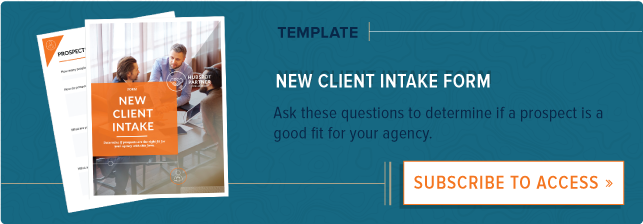
Digital marketing is undergoing a revolution.
Agencies have more granular insight than ever before into how their campaigns are performing. The days of selecting media channels based on broad demographic data and relying on generalized ad impression numbers are over.
Marketers can now target specific audiences across multiple devices and measure engagement on each touch point, building comprehensive roadmaps to conversion. They can confirm the right users are seeing digital ads and even serve websites that are customized to each user with dynamically generated content.
The best part is, every engagement can be mapped to its respective touch point and measured. This empowers agencies to become better strategic advisors in letting clients know exactly what's working (and what isn't).
The driving force behind this seismic shift is data -- the collection of it, tools to analyze it, and automation algorithms that use it to capture and nurture the best leads.
But how should agencies approach this new flux of data? What should they specifically focus on, and what can they afford to ignore?
Crafting data-driven campaigns doesn't have to be overly complicated or take months to implement. The foundation of a solid campaign that harnesses the power of data to reach the right audience can be built upon four primary tactics:
4 Data-Driven Ways to Create Better Targeted Ad Campaigns
1) Get Programmatic with Media Buying
The old methods of buying media have been upended. The days of reviewing spreadsheets, endlessly negotiating rates, and committing to inflexible long-term contracts that you are stuck with -- even after it becomes obvious that they aren't working -- are over.
Programmatic buying is an automated method of purchasing digital media in real-time that is easily adjustable. That means if budgets change, if you want to test new messaging, or if placements aren't producing good results, media buys can be changed or scaled instantly.
According to eMarketer, more than two thirds of all digital display advertising in 2016 will be purchased programmatically.
This process gives advertisers a direct avenue to be iterative with campaigns based on data received from first, second, and third party sources.
With access to enhanced data and the ability to implement changes based on what it reveals with no lead time, programmatic buying optimizes media placement quickly and gives advertisers the ability to make changes based on internal changes or external market forces immediately.
2) Verify the Right People are Seeing your Ads
Digital publishers and platforms have their own metrics for who views ads on specific channels, but the market changes quickly and the data they offer is not always accurate. If real prospects aren’t seeing your ads, then the money you spent placing them is a waste. It's important to verify that the numbers and demographics you’ve been promised match the reality of what is delivered.
The best way to accomplish this is through third party ad verification -- but if you aren't ready to make this investment, you can confirm for yourself that the tools and tactics used by advertising partners are working as promised.
Ensuring users actually see the ads that have been served to them can get tricky. Some platforms still use the legacy "impressions served" model where you pay for each impression the moment the ad loads -- but how do you know it was seen?
This can get especially complex when it comes to videos because not only do you have to consider how much of the player is in view, you also need to know how much of the video was seen.
Guidelines from the Media Rating Council count a video ad as viewed when at least 50 percent of the ad is visible for two consecutive seconds.
3) Personalize Websites with Dynamic Content
Your client's website is made of dozens, hundreds, or even thousands of unique visual elements -- but there's no reason they have to be presented the same way to every single visitor. They can, in fact, be customized to individual users based on what you know about them, providing the content that is most likely to be relevant to them first.
You already expect your advertising partners to understand web visitors and only serve your ad to relevant targets. You can use the same logic to create different versions of your site that are displayed for each unique visitor.
Use the data that you have about each user to customize the experience. It can come from browsing history, demographics, and your existing repository of consumer data. Even if you have no data available on a specific user, your website can make intelligent customizations based on navigation behaviors starting with the first click. This personalization ensures that every user has the most engaging experience and sees relevant offers that guide them through the conversion funnel.
4) Use People-Based Measurement to Track Multiple Devices
eMarketer estimates that mobile has already passed desktops as Google’s top device driver of ad revenues, but that doesn’t mean you can concentrate exclusively on mobile.
The modern buying journey is not always linear -- consumers enter and exit the funnel at will on different devices. They will interact with brands multiple times on computers, smartphones, and tablets before converting, and they expect a consistent experience the entire way. The only way to provide this is to track relevant data about each consumer -- and you can't entirely accomplish this with device-specific technology like cookies.
Instead, people-based measurement uses unique identifiers that can track engagement across devices. This gives you the ability to measure ROI by channel, obtain accurate reach and frequency measurement, and even tie offline conversions to online interactions.
With so many touch points in today's sales funnels, attributing conversion to the "last click" is no longer an effective measure to base decisions on. The right messaging at every point is vital to keeping consumers moving on their journeys and you must tie it all to conversion.
Your Campaign Shouldn't Be a Shot in the Dark
Without the visibility of data-driven tactics, the customer journey is difficult to track, and attributing conversions to the right engagements is nearly impossible.
Using the correct information to advise media buying, messaging placement, website, and touch point mapping elevate all of your marketing campaigns from shots in the dark to highly targeted efforts with the power to right the course on any specific element that misses the mark the first time.
What data-driven tactics will your agency be focusing on in 2017? Let us know in the comments.
from HubSpot Marketing Blog https://blog.hubspot.com/marketing/data-driven-targeted-ad-campaigns

No comments:
Post a Comment